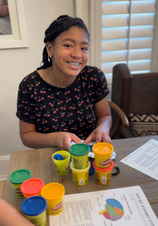Understanding Brain Parts and Their Feel-Good Chemicals
- Ashley Gordon
- Apr 25, 2023
- 2 min read
Understanding the brain and how it works is an essential part of education, yet it can often be a complex topic for students to grasp. That's why we're excited to introduce a new free resource for educators and parents: the "Understanding Brain Parts and Their Feel-Good Chemicals" lesson plan.
This engaging and interactive lesson plan provides a fun and creative way for students to learn about the different parts of the brain and the chemicals that help regulate our moods and emotions. By creating a model of the brain using playdough and participating in various activities, students will gain a better understanding of how the brain works and how to hack their happy chemicals.

The lesson plan includes a detailed outline of each activity, printable worksheets, and suggestions for discussion topics to help educators guide their students through the lesson. The activities are designed to be hands-on and interactive, encouraging students to use their creativity and curiosity to learn about the fascinating world inside their heads.
By the end of the lesson, students will have a deeper understanding of the different parts of the brain and how they work together to regulate our emotions and behavior. They will also learn about the different chemicals, such as dopamine and serotonin, that help us feel happy and motivated, and how to activate these chemicals in a healthy way.
This lesson plan is suitable for a wide range of ages and can be adapted to different learning environments, whether you're homeschooling or teaching in a traditional classroom setting. The materials needed for the lesson are inexpensive and easy to find, making it accessible for educators and parents on a budget.
If you're interested in accessing this free resource, you can find it at the following link: https://www.fortheculturehomeschool.com/product-page/lesson-plan-for-understanding-brain-parts-and-their-feel-good-chemicals. We hope this lesson plan will be a valuable tool for educators and parents looking to engage their students in the fascinating world of neuroscience.






















Comments